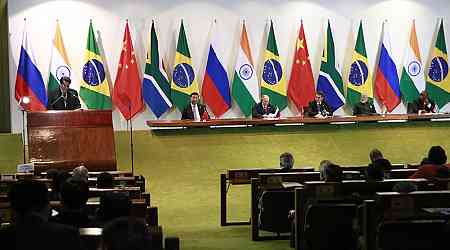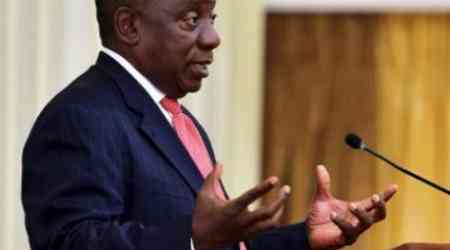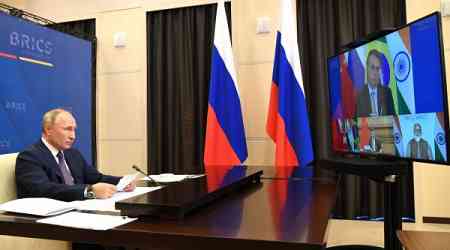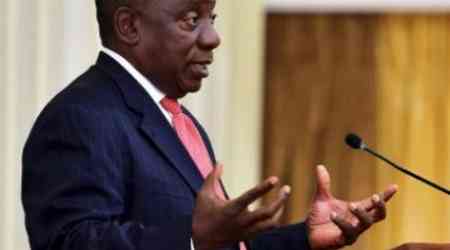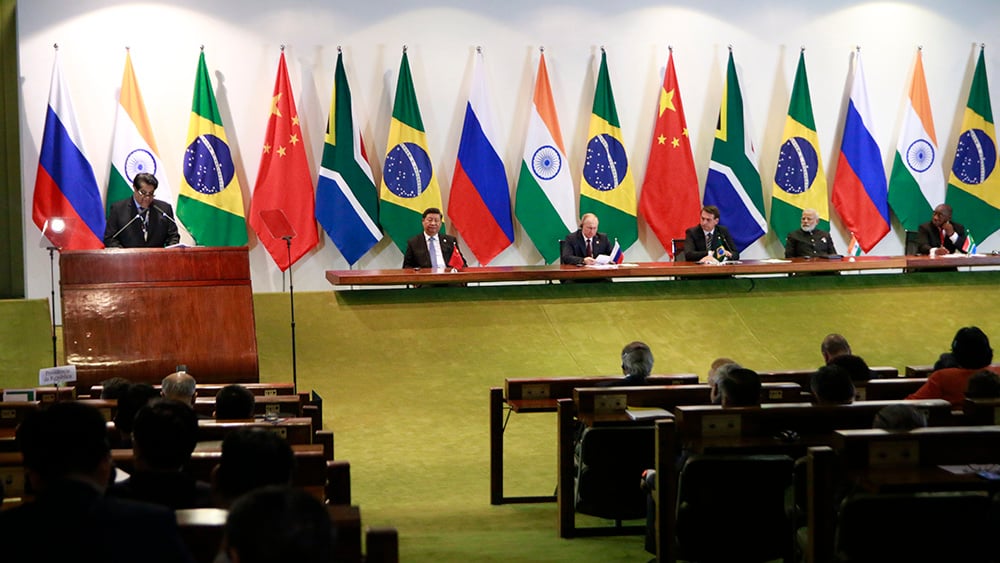“We must rebuild our economy,” says Finance Minister Tito Mboweni during his MTBPS Speech October 28, 2020
In his Supplementary Budget speech on June 24 2020, Finance Minister Tito Mboweni said the storm shall pass. The storm he was talking about was the economic devastation caused by a national lockdown to combat the Covid-19 pandemic. This lockdown resulted in an unprecedented 17.6 per cent year-on-year (y/y) decline in the second quarter for the South African economy.
Only India among the BRICS had a more severe contraction with a 23.9 per cent y/y slump. Brazil has an economic structure similar to South Africa and it suffered a 11.4 per cent y/y decrease as the lockdown in that country was not as severe as South Africa’s. Russia had a 8.0 per cent decrease, while China’s economy grew by 3.2 per cent y/y in the second quarter.
A more appropriate comparison for China would be the first quarter as it imposed selected lockdowns then after the Covid-19 virus emerged in Wuhan. In the first quarter, the Chinese economy fell by 6.8 per cent y/y.
In June, the National Treasury forecast that the economy would contract by 7.2 per cent in 2020, but that remained dependent on a rapid increase in take up of the bank loan guarantee fund of R200 billion, which is a massive 40 per cent of the R500 billion economic stimulus package announced in April. As of September 26, only 8 per cent of this fund had been taken up, so over what time period will the remaining 92 per cent be taken up? That is why several economists are looking at a contraction of 10 per cent or more this year. In the October Medium Term Budget Policy Statement (MTBPS), the Treasury revised the contraction to 7.8 per cent.
Economists are also skeptical of the foreign trade projections. In the first eight months, imports grew by 0.4 per cent y/y in nominal terms, while exports fell by 15.9 per cent y/y. In September, the volume of bulk exports soared by 25.3 per cent y/y.
A dramatic collapse in household and business income due to the severe restrictions on movement and social interaction, led to a surge in job losses, business closures and a severe contraction in international goods trade. The unprecedented national lockdown meant that for the first time the number of not economically active 15 to 64-year olds at 20.578 million exceeded the 18.443 million in the labor force. Only 14.148 million have a job and 10.064 million have a formal sector job.
Data from the National Income Dynamics Study – Coronavirus Rapid Mobile (Nids-Cram) survey showed that unemployment among people living in urban townships and informal settlements more than doubled. This meant that almost half of households thus ran out of money to buy food, causing extensive hunger and social distress. The situation would have been even worse without government grants. By the end of September, R47.4 billion had been paid to 10.6 million beneficiaries through the accounts of 931 000 employers via the temporary employer/employee relief scheme (TERS).
The job losses and curtailed salary meant that personal income tax had the largest fall out of all tax revenue categories, with the overall tax revenue plummeting by R321.5 billion compared with the February 2020 projections.
The Treasury said that over the past decade, increased government spending has failed to promote growth. Since 2008, real spending growth has averaged 4.1 per cent annually, well above annual real GDP growth of 1.5 per cent. Yet despite high levels of expenditure, supported by increased debt accumulation, growth has not recovered to pre-2008 levels.
The rise in government spending over the past decade compared with slow growth for the overall economy meant that consolidated government spending accounted for 35.9 per cent of GDP in 2019/20 compared with 29.6 per cent of GDP in 2008/09. A major part of the rise in government spending has been the 51 per cent increase in the real cost of the public-service wage bill since 2008.
The combination of reduced tax revenue and higher government spending means that government needs to borrow more to finance the fiscal deficit for 2020/21, which jumps to 14.6 per cent of GDP from the 6.8 per cent expected in February.
Gross loan debt as a percentage of GDP therefore jumps to 81.8 per cent in fiscal year 2020/21 from 63.3 per cent in fiscal year 2019/20 and 50.5 per cent in fiscal year 2016/17.
The Government intends to borrow $7.3 billion from multilateral finance institutions for its pandemic response. This includes a $1 billion loan from the BRICS New Development Bank, $4.3 billion from the International Monetary Fund, $0.5 billion from the African Development Bank and $1.5 billion from other unspecified sources.
The Treasury highlighted the risk of a debt spiral because if this spiral is not halted and reversed, it is likely that some state-owned companies and public entities will collapse, triggering a call on guaranteed debt obligations. Failure to substantially reduce costs, address longstanding governance failures, prosecute state-capture participants and undertake profound operational reforms has contributed to already unsustainable financial positions in many public-sector institutions. The pressure on public finances requires fundamental changes to the manner in which government supports these institutions, and such reforms will be implemented in the near term.
Government has negotiated a package of economic reforms with its social partners that will improve productivity, lower costs and reduce demands of state-owned companies on the public purse. These measures include finalizing electricity determinations, unbundling Eskom and taking other steps to open up energy markets, modernize ports and rail infrastructure, and license radio spectrum.
The Treasury estimated that, in combination, these reforms can raise growth to over 3 per cent over the next 10 years and create more than 1 million jobs. It warned however that growth reforms are only expected to begin yielding results over the next several years, implying continued weakness in tax revenue collection over the period ahead.
Helmo Preuss in Pretoria, South Africa for The BRICS Post
























